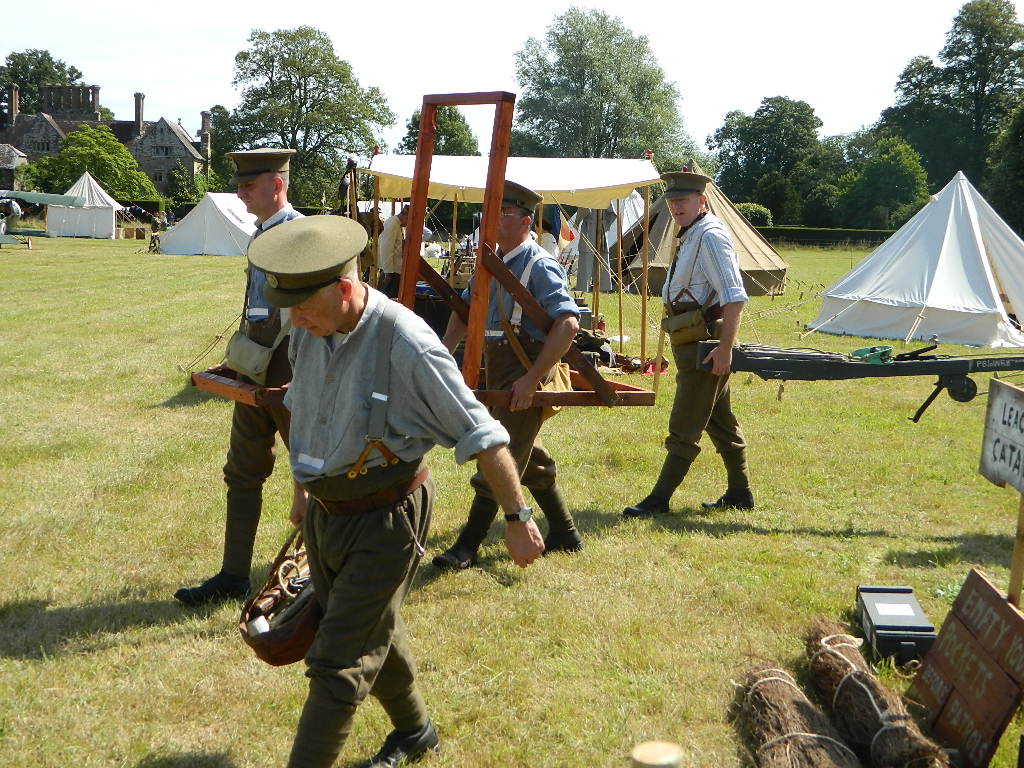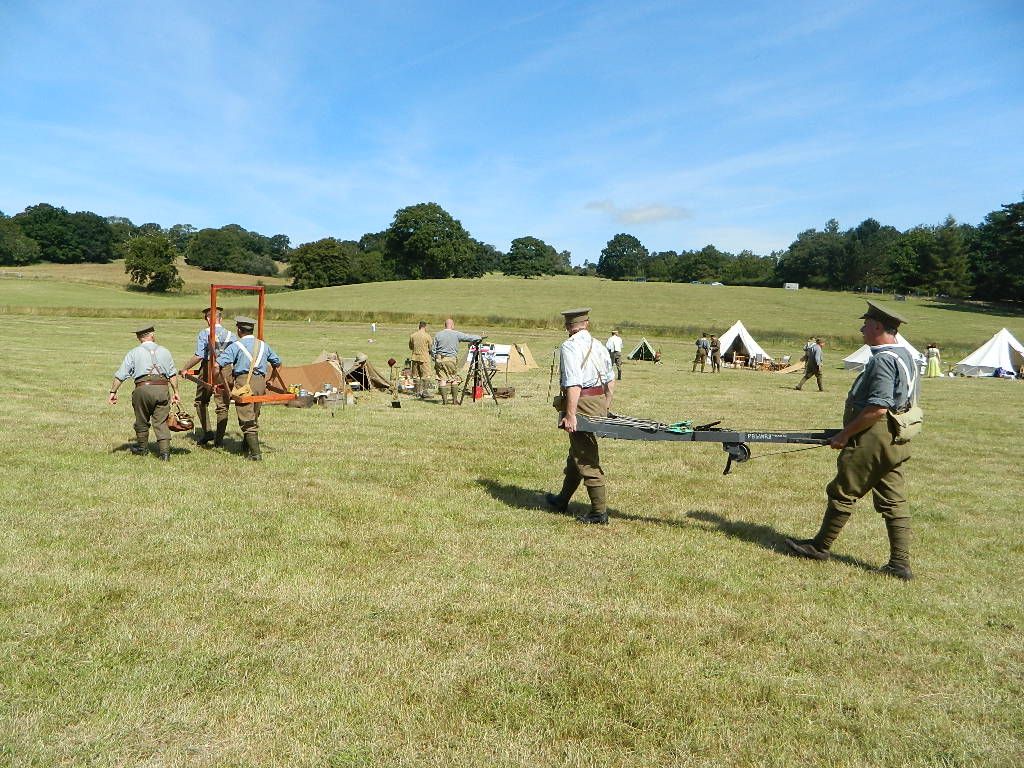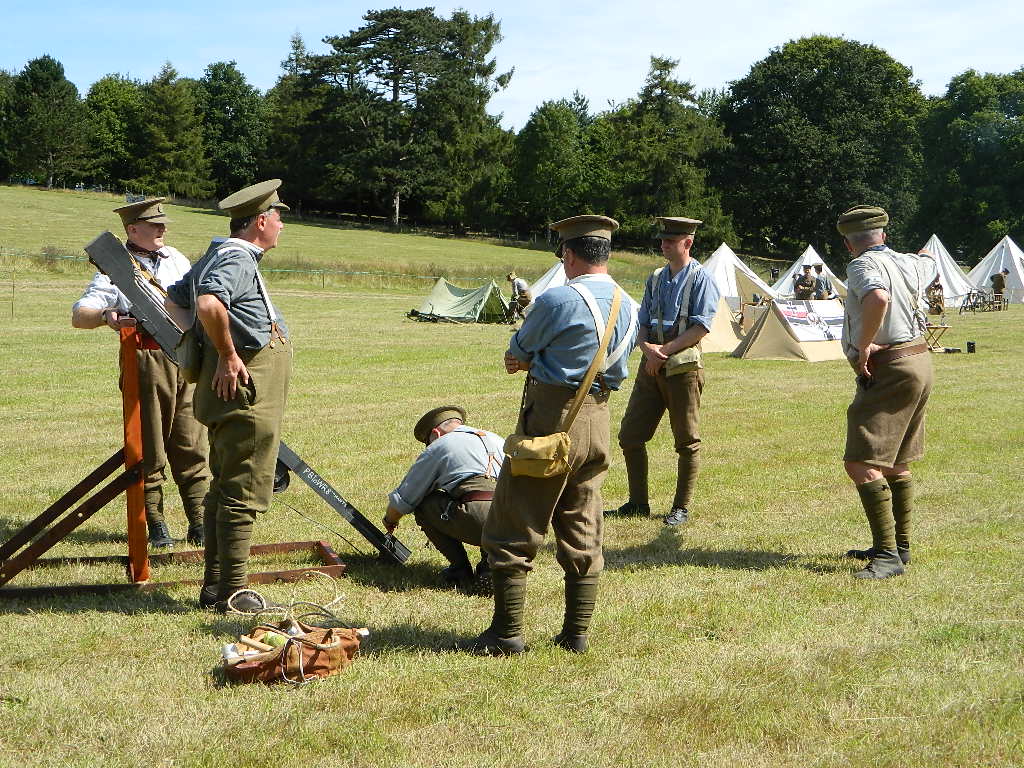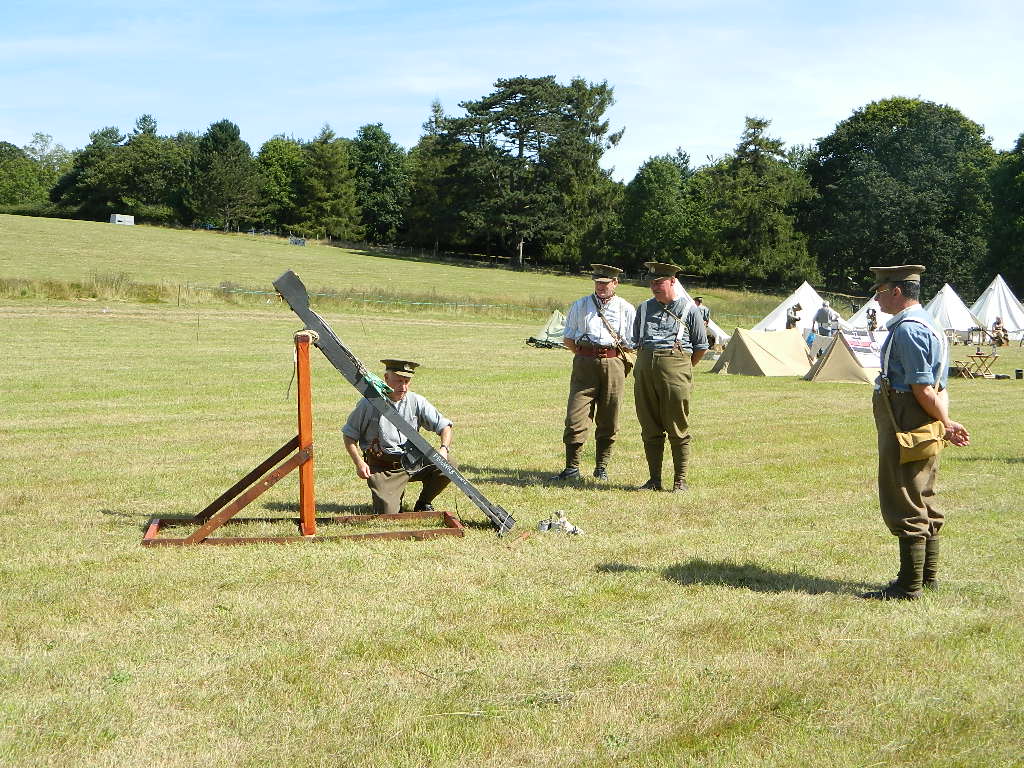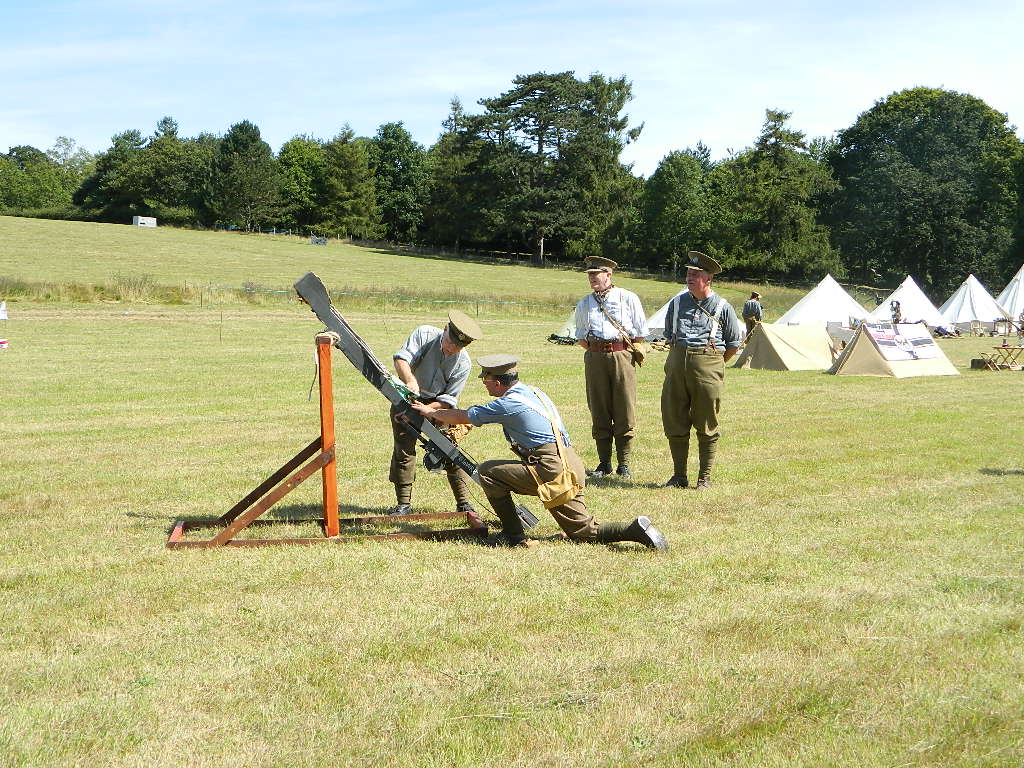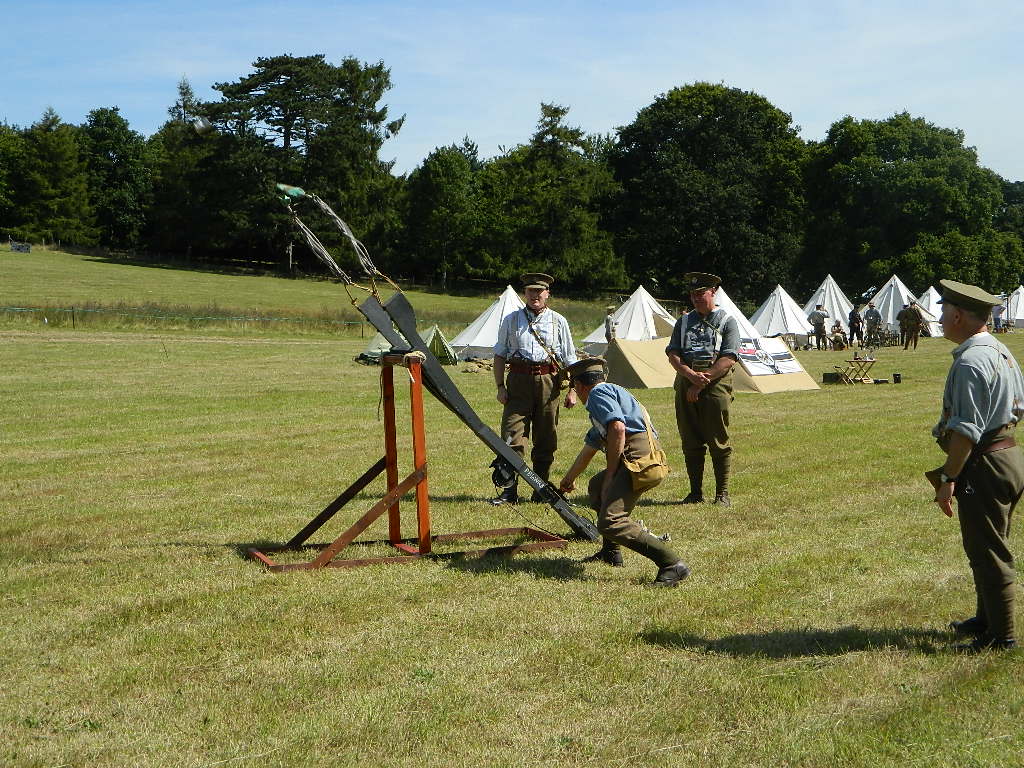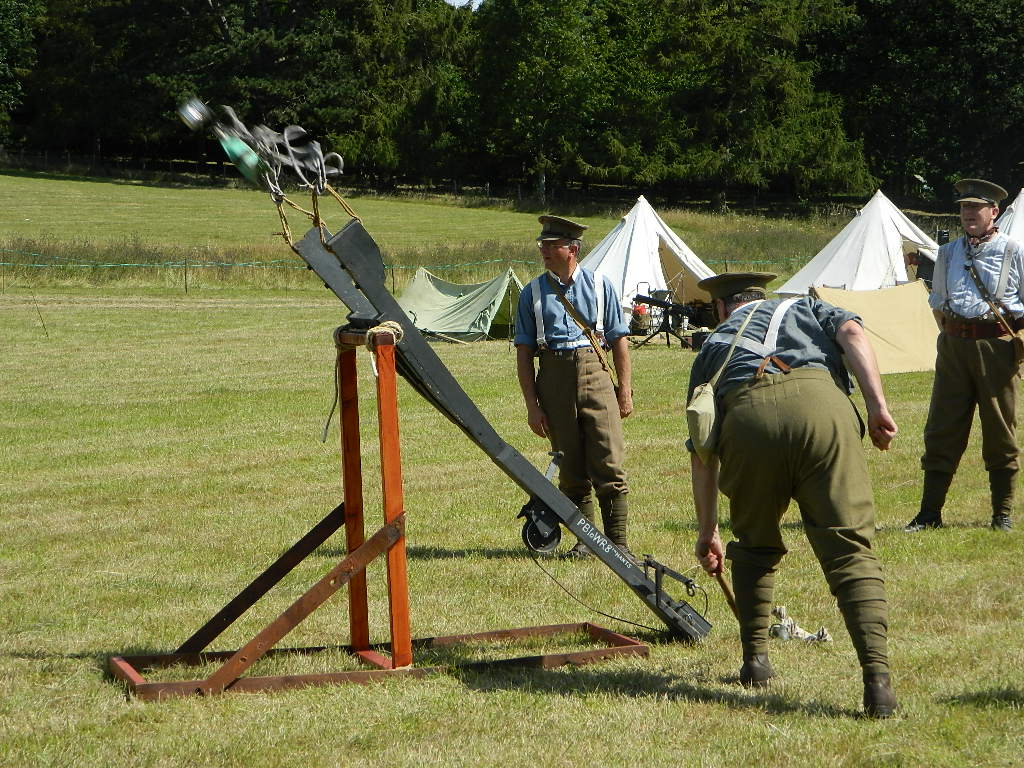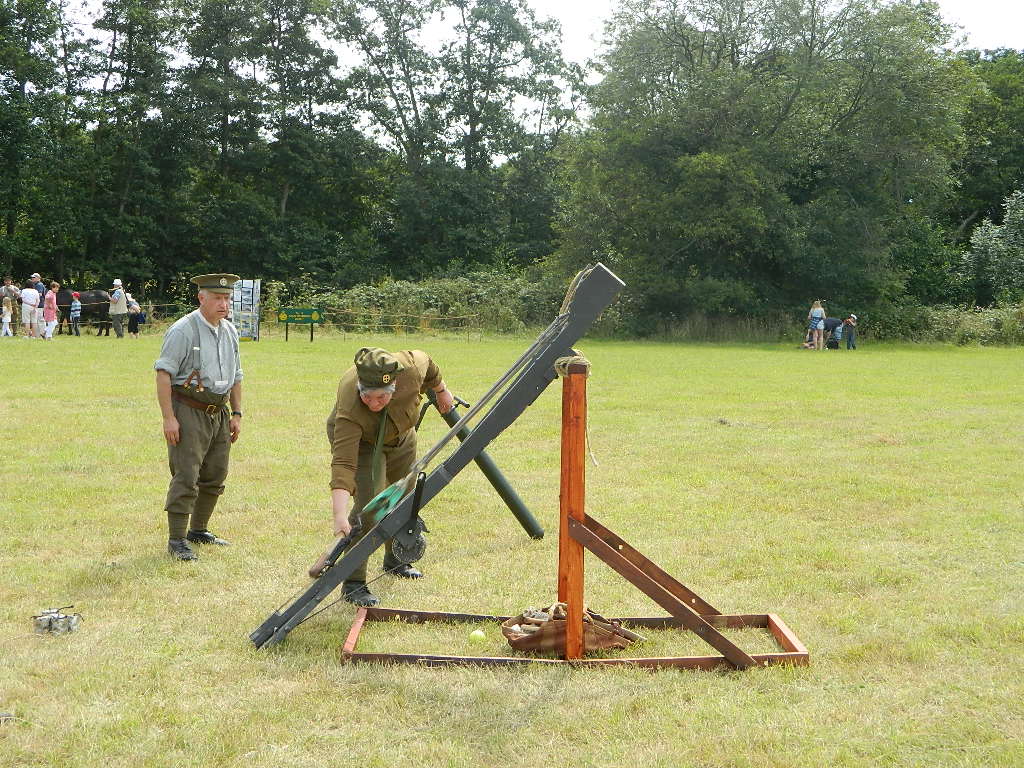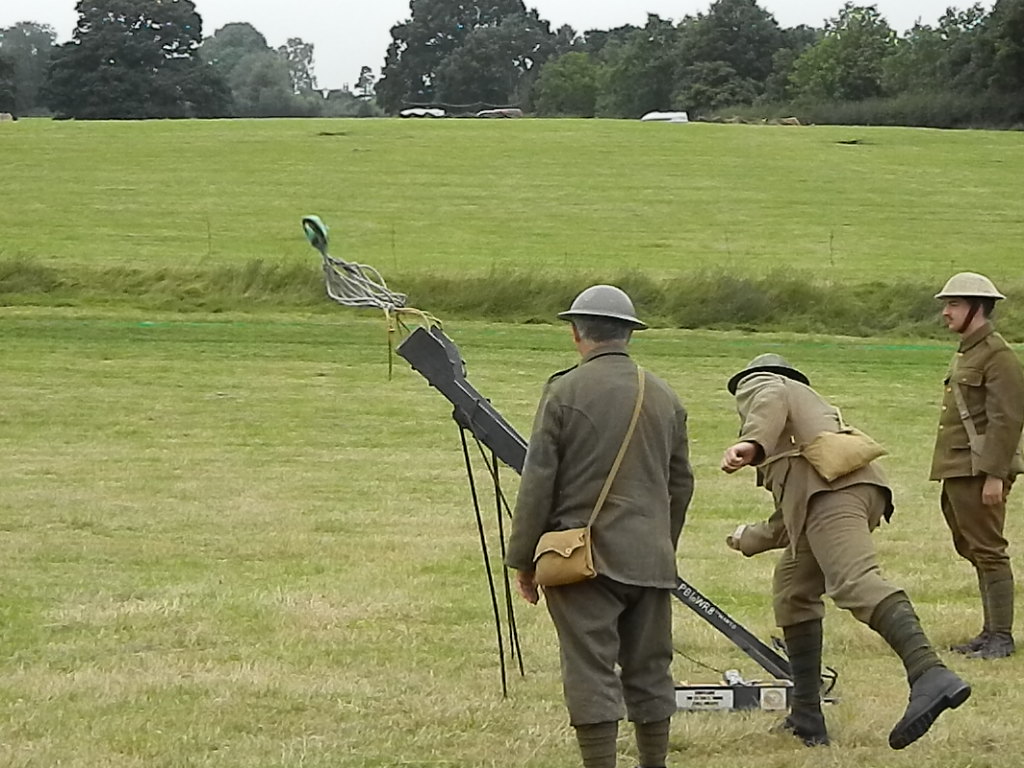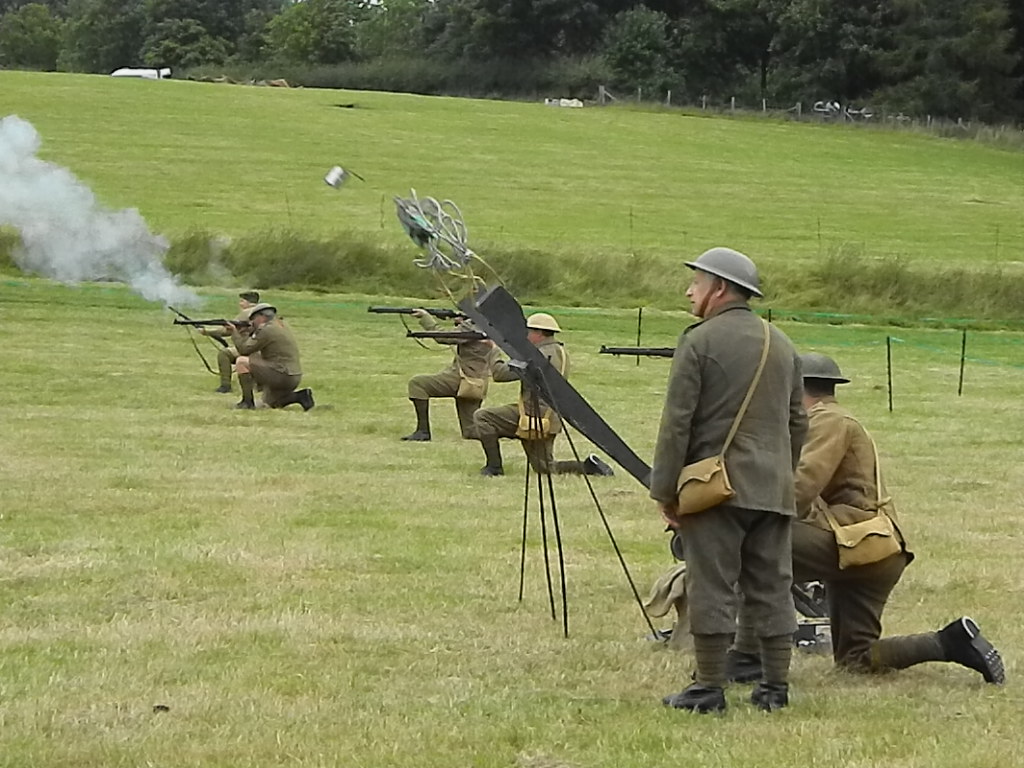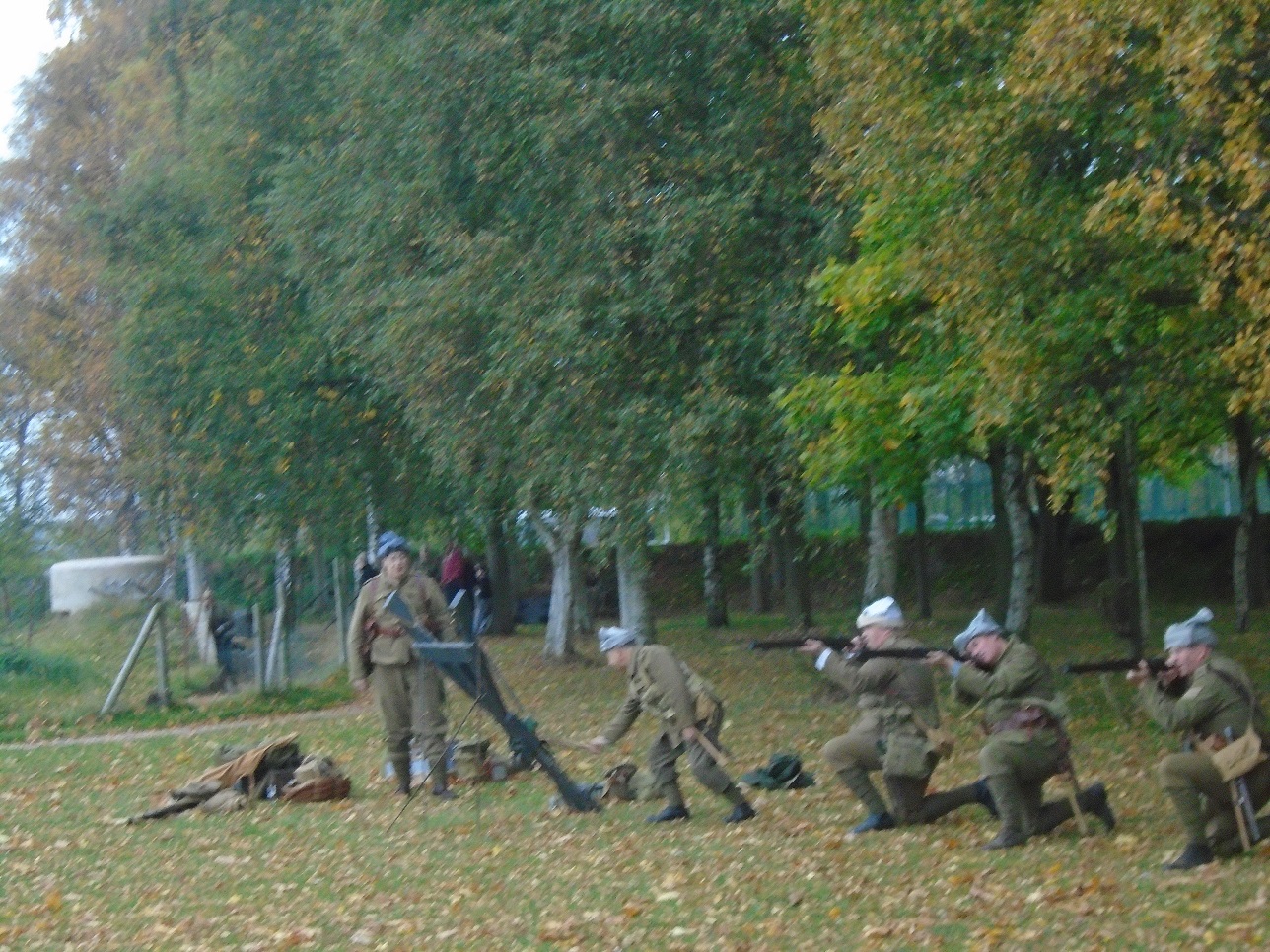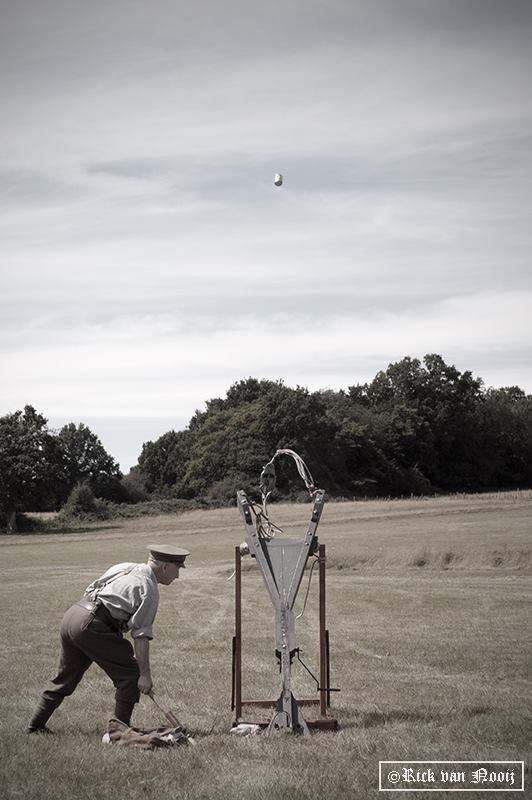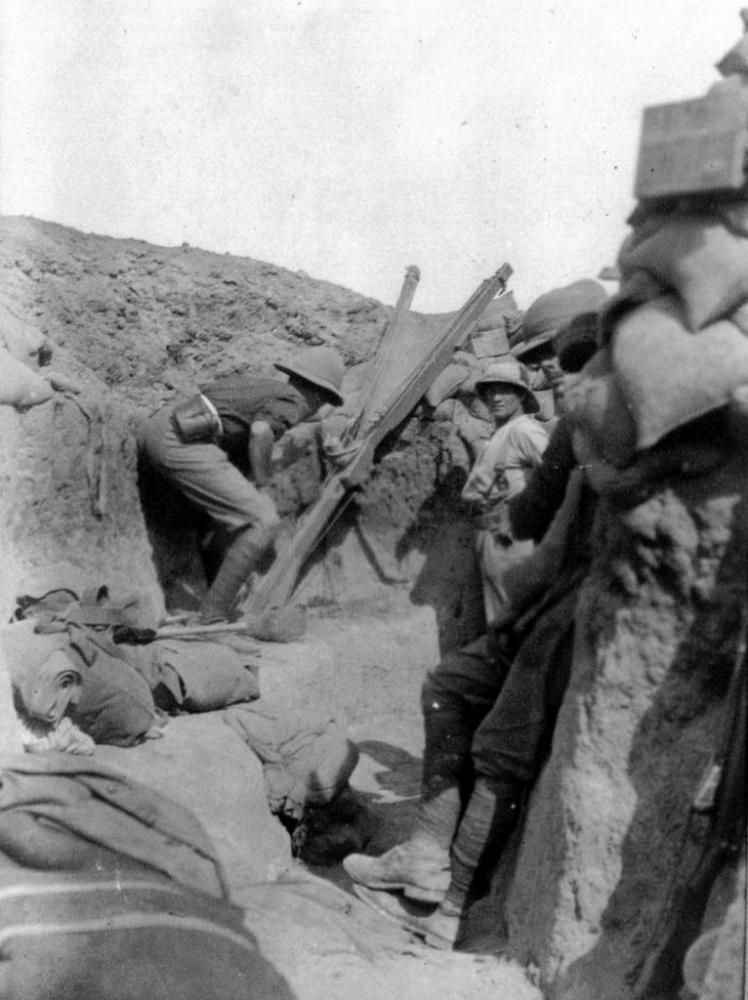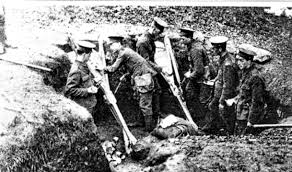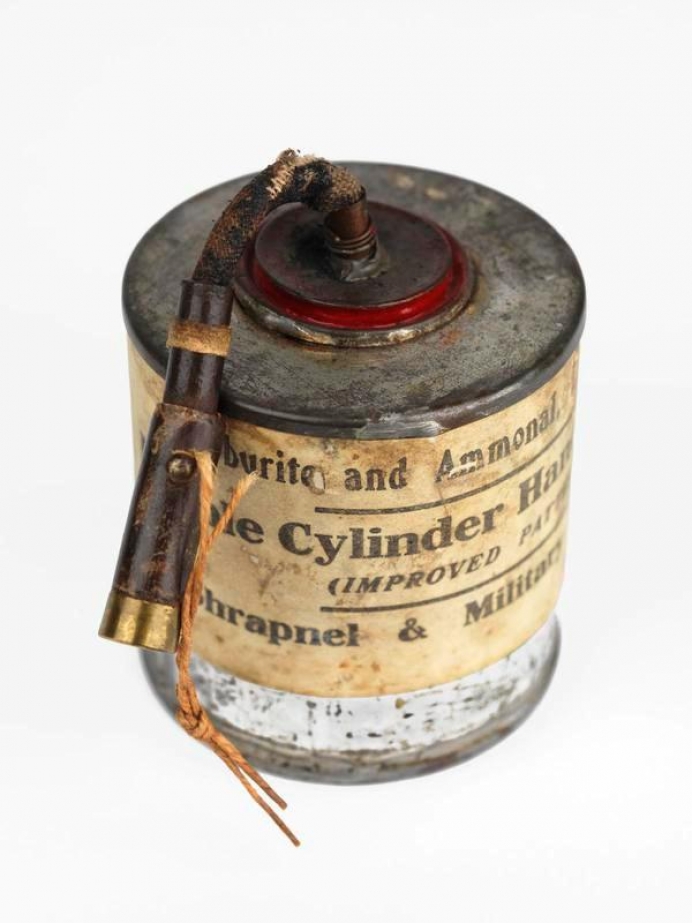In October 1914 a gentleman by the name of Claude Pemberton Leach, a resident of South Kensington presented his war-winning machine to Louis Jackson of the War Department for evaluation and approval. He claimed that it could throw a golf ball nearly 200 yards. Sadly, such a limited performance was thought unlikely to bring the German Army to its knees. Having neglected the hand grenade as a modern weapon, the British Army was making do with home made “jam tin” bombs. A Jam tin bomb weighed morethan a golf ball, and 200yds was considered the minimum acceptable range.
However, Jackson must have seen something inthe basic device and suggested to Leach that he improve the strength and durability of the catapult and the rubber bands that powered it. Mr Leach promised to return when he could send a 2lb bomb the 200 yards needed, with a relative degree of accuracy.
Mr Leach now decided that he needed professional help, as he went with his contraption to Gamage’s “Cycling, Sports, and General Outfitters” store. Eight months later, on 22nd May 1915, they applied for a patent together which was granted as Pat No 7710/15. Because Gamages was a co-patentee, this implies that they made a significant improvement over Mr Leach’s basic model. There is evidence to suggest that the catapult was already in use in France before the application of the patent, but it would also seem that Gamages themselves were the manufactures
Far away in the Dardanelles, the Royal Engineers of No 2 Field Company, Royal Naval Division, were making a similar device, but their version was 12 feet long, as opposed to the shorter seven-foot length of the Western Front version, possibly because of the trench conditions in France and Flanders. The Engineers would seem to have been working from drawings supplied, but they used a similar off the chandler’s shelf fully enclosed yacht winch. (This item was such a prime example of gross over engineering, that it must have contributed at least 30% of the £12/10/6d that each catapult cost the War Department). The RND’s 12’ foot example must also have been very difficult to manoeuvre and hide in a trench.
Although Mr. Leach had first taken his catapult to Jackson at the War Department, the Experimental Section at the Hythe School of Musketry were also involved in trials with it. The Experimental Officer, Captain Todhunter, went to Gamage’s works department in late spring of 1915 because the original design of canvas pouch was not performing well. Once modified “good results” were reported, with a recommendation that the modified pattern be sent out to France to replace those already in service. The catapult was now fitted with 12 strands of 1/2 inch diameter rubber per side, and when set at an angle of 35 degrees, would send an 18oz bomb about 160yds, with reasonable accuracy, but this was not much of a distance.
Capt Todhunter thought the pouches should have a range scale printed on them and a full set of instructions on the use of the catapult should be issued with all new weapons. (One wonders how the troops were able to use the weapon without the instruction manual prior to this). In May 1915 the Works Department Manager produced a set of instructions, which became dubbed as CDS 20. This contained such warnings as “The rubber springs should be fixed so that no twists in the rubber springs exist”. It was also advised that to decrease the range, rubber strands should be removed rather than reducing the pull because “accuracy could only be obtained with a full extension”. (This did seem to contradict the recommendation that the springs should not be maintained at full stretch due to increased rates of deterioration).
The Manager also recommended a set angle of 41.5 degrees to obtain best results, rather difficult to set in a trench despite a small brass inclinometer pointer screwed to the side of the catapult.
The one great problem with the catapult was the rubber bands, which being made from natural un-vulcanised rubber soon lost their elasticity and deteriorated in performance quite rapidly. For some reason, partly vulcanised rubber bands were not used. Fully vulcanised bands have little or no elasticity, and are therefore useless. Susceptible to weather, pollutants, and over stretch, the only things the authorities had to offer as a preventative were various “preparations” to preserve the rubber.
When producing its optimum performance, the catapult would throw its bomb in a beautiful rainbow arc for 4.25 seconds out to 75 yards. According to the optimistic Works Manager, the greatest distance one had hurled a bomb was 300 yards taking a mere 5 seconds to fly that far. [I doubt this very much, based on experience with mine – 15 seconds would be more like it]. The graceful slow flight of the bomb meant that an enemy could easily spot it coming, and seek employment elsewhere, but it had one advantage over the more advanced trench mortar – it was silent.
The Leach enjoyed its moment of fame during 1915, and although most had a further brief moment of glory as firewood for Tommies to cook on, a few were still about in 1916 when in the summer of that year the poet Edmund Blunden discovered one, and whiled “away a foolhardy hour with a trench catapult, which …I discovered, would readily toss a Mills bomb far enough to burst as shrapnel over the huge crater in front of the German line”. However, even as early as July 1915, the catapult was reduced in importance as a weapon of war. At Red Lamp Corner on the Western Front where the German trenches were well within range,
The Royal Welch Fusiliers discovered one catapult’s only offensive contribution to the war had been to shoot rude messages wrapped in clay to upset the Hun. Apparently the previous occupying battalion had been on friendly terms with the enemy.
Long after the catapult had ceased to be a war winning, front line weapon in France, 300 were issued by the Trench Warfare Department for home use and training, presumably to free up much needed more up to date weapons for the front. The Leach/Gamage catapult was the only trench catapult to enter the official British weapons inventory, although several home/field made contraptions appeared from time to time, lorry springs being a great favourite.
On the 31st October 1918 the Ministry of Munitions deposited with the currently forming Imperial War Museum a Leach/Gamage catapult. Now known as Acc 2260, this is the only known surviving example, the last one out of 3,152 officially produced, not counting local made, and those oversized examples made by the Royal Naval Division.

